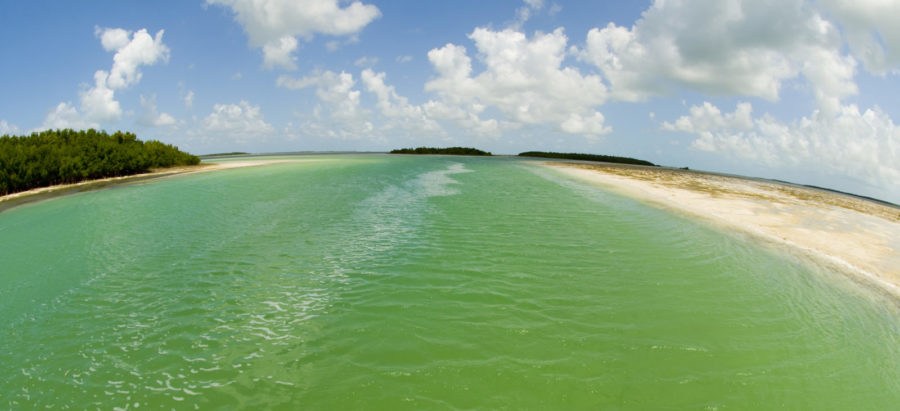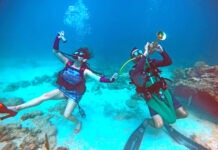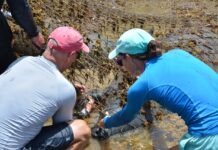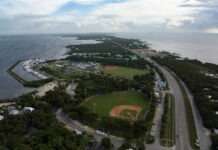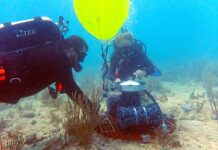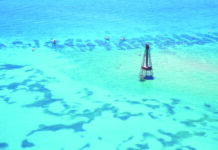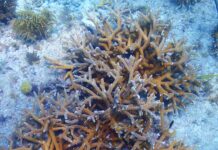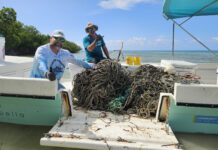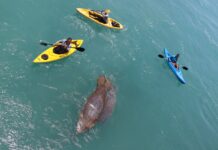
The Florida Fish and Wildlife Conservation Commission board, appointed by the governor and chaired by Key West businessman Robert Spottswood, recently submitted its response to — and has some issues with — the Florida Keys National Marine Sanctuary’s new proposed management plan.
In a 58-page document authored by Spottswood, the FWC board emphasizes its commitment to balancing user access to the marine sanctuary with resource protection. In its response, the state board also repeatedly asserts its authority to manage fisheries in local, state and some federal waters. Finally, the FWC board repeats its ongoing concerns about law enforcement staffing levels, which, Spottswood writes, have never reached the levels promised when the sanctuary was first established.
Spottswood questions how the National Oceanic and Atmospheric Administration (NOAA), which manages the sanctuary, expects FWC to enforce new laws, boundaries and restrictions when it barely has sufficient manpower to enforce current regulations.
“As my fellow commissioners and I consider the management changes proposed in the Restoration Blueprint, we find ourselves asking important fundamental questions including: whether or not the current management strategies are working; if the new proposed management approaches are the best way to ensure a healthy ecosystem as well as sustainable fisheries in the Florida Keys; and whether or not the proposed increased local level access restrictions will even accomplish the goals of the DEIS at the ecosystem level,” Spottswood writes. “We are concerned that the public will struggle with the same questions that we have, and that the lack of clear answers will make it difficult to gain public support for the proposed management actions. In order to satisfactorily address these questions, further evaluation of existing management measures, as well as proposed management measures, are needed to ensure that the actions we ultimately take are necessary and expected to produce results.”
The FWC’s response criticizes the sanctuary’s draft management plan for not appropriately addressing water quality issues and the effects of water flow from the Everglades on Keys marine resources.
“We do understand that many of these ecosystem impacts are beyond the scope of the FKNMS to control, but the effects of these impacts should still be identified and the actions to address them should be recognized in the (draft plan).”
With regard to fishery management, the FWC board’s response states, “FWC is committed to its continuing lead role, as part of the shared partnership with FKNMS, in promulgating fisheries management actions within the FKNMS, including area closures and access restrictions for fisheries management purposes. Area closures and access restrictions should be an action of last resort and should be considered on a case-by-case basis, only after evaluating the science and potential ramifications of such actions….For example, the proposed closure of Western Dry Rocks is a fisheries management action under FWC’s authority and we will consider whether alternative management strategies are warranted for this area.”
Spottswood also enclosed in his response a series of letters dating back to the 1990s in which FWC, formerly known as Florida Marine Patrol, requested additional enforcement officers from the federal government.
Sarah Fangman, superintendent of Florida Keys National Marine Sanctuary, acknowledged the challenges that the new plan presents and pledged to continue working with FWC on the final draft.
“The sanctuary has worked with the state throughout this management review process, which officially started in 2012,” Fangman said after receiving the FWC board’s response. “Together we are attempting to address complex issues that do not have easy answers. We look forward to continuing to work with FWC and the Department of Environmental Protection to find solutions that will help address the serious challenges we face in our marine environment, recognizing that the health of sanctuary habitats and marine life have a profound effect on our economy and our way of life.
“Now that the sanctuary has completed the Restoration Blueprint public comment process, we are focused on synthesizing those comments and using them to refine our proposals into a single proposal, also referred to as a draft rule,” Fangman said. “We will release that draft rule, hopefully later this year, and there will be another official public comment opportunity. That input will inform what changes there might be to the sanctuary’s boundaries, marine zones, sanctuary-wide regulations and management plan.”
